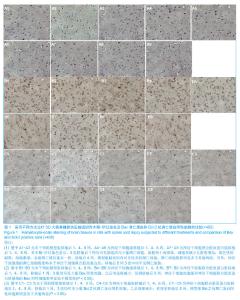| [1]Pierdomenico L,Bonsi L,Calvitti M,et al.Multipotent Mesenchymal stem cells with immunosuppressive activity can be easily isolated from dental pulp. Transplantation.2005; 80(6): 836-842.[2]韩冰,付小兵.间充质干细胞的研究进展与临床应用前景[J].中国修复重建外科杂志, 2006,20(12):1257-1261.[3]沈强,赵定麟,Gunther SCHLAG.颈髓段下行传导束诱发电位动物模型研究[J].第二军医大学学报,2000,21(7):633-635.[4]Basso DM,Beattie MS,Bresnahan JC.A sensitive and reliable locomotor rating scale for open field testing in rats.J Neurotrauma.1995;12(1):1-21.[5]Collins WF,Piepmeier J,Ogle E.The spinal cord injury problem: a review. Cent Nerv Syst Trauma.1986;3(4):317-331.[6]Anderson TE, Stokes BT.Experimental models for spinal cord injury research: physical and physiological considerations.J Neurotrauma.1992;9 Suppl 1:S135-142.[7]O’Brien MF,Lenke LG,Lou J,et al.Astrocyte response and transforming growth factor-b localization in acute spinal cord injury.Spine.1994;19:2321-2330.[8]Williams GT,Smith CA,McCarthy NJ,et al.Apoptosis: final control point in cell biology.Trends Cell Biol.1992;2(9): 263-267.[9]Li GL, Brodin G,Farooque M,et al.Apoptosis and expression of Bcl-2 after compression trauma to rat spinal cord.J Neuropathol Exp Neurol. 1996;55:280-289.[10]Yong C,Arnold PM,Zoubine MN,et al.Apoptosis in cellular compartments of rat spinal cord after severe contusion injury.J Neurotrauma.1998;15(7):459-472.[11]Brooks C,Dong Z.Regulation of mitochondrial morphological dynamics During apoptosis by Bcl-2 family proteins: a key in Bak?Cell Cycle.2007;6(24):3043-3047.[12]Cory S,Adams JM.The Bcl2 family: regulators of the cellular life-or-death switch. Nat Rev Cancer.2002;2:647-656.[13]Katoh K,Ikata T,Katoh S,et al.Induction and its spread of apoptosis in rat spinal cord after mechanical trauma.Neurosci Lett.1996;216(1):9-12.[14]Crowe MJ,Bresnahan JC,Shuman SL,et al.Apoptosis and delayed degeneration after spinal cord injury in rats and monkeys. Nat Med.1997;3(1):73-76.[15]Hains BC,Black JA,Waxman SG.Primary cortical motor neurons undergo apoptosis after axotomizing spinal cord injury.J Comp Neurol.2003;462(3):328-341.[16]Kato H,Kanellopoulos GK,Matsuo S,et al.Neuronal apoptosis and necrosis following spinal cord ischemia in the rat.Exp Neurol. 1997;148:464-474.[17]Mattson MP,Rychlik B,Chu C,et al.Evidence for calcium-reducing and excito-protective roles for the calcium-binding protein calbindin- D28k in cultured hippocampal neurons.Neuron.1991;6(1):41-51.[18]Gage FH.Mammalian neural stem cell.Science. 2000;287 (5457):1433-1438.[19]Kuan WL,Barker RA.New therapeutic approaches to Parkinson’s disease including neural transplants.Neurorehabil Neural Repair.2005;19(3):155-181.[20]Kamei N,Tanaka N,Oishi Y.BDNF, NT-3, and NGF released from transplanted neural progenitor cells promote corticospinal axon growth in organotypic cocultures. Spine. 2007;32(12):1272-1278.[21]张国庆,燕景锋,刘世勤.BDNF基因修饰神经干细胞移植对大鼠脊髓损伤后神经细胞凋亡的影响[J].山东医药, 2006,46(14): 22-23.[22]Isele NB,Lee HS,Landshamer S,et al.Bone marrow stromal cells mediate protection through stimulation of PI3-K/Akt and MAPK signaling in neurons.Neurochem Int.2007;50(1): 243-250. |





